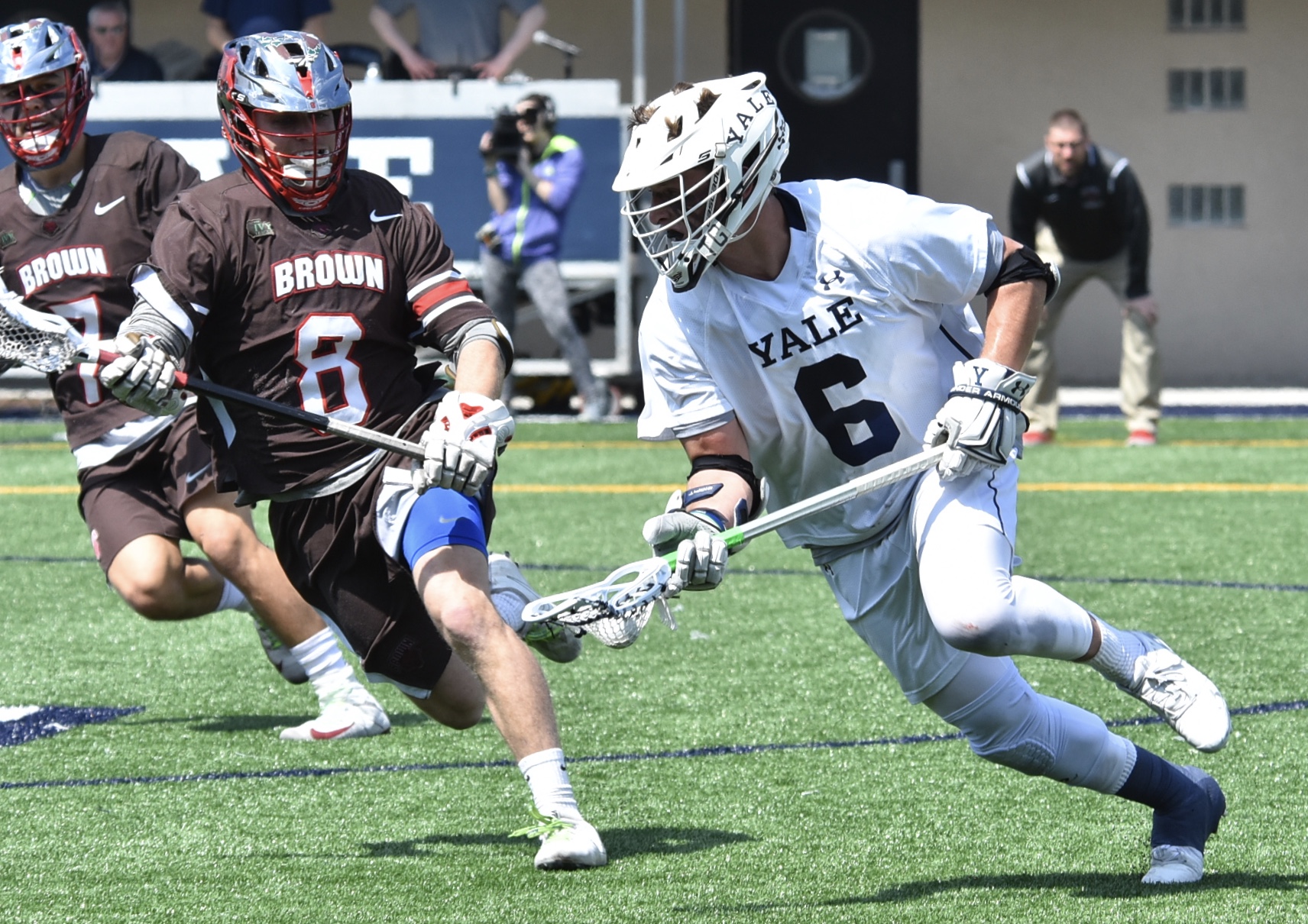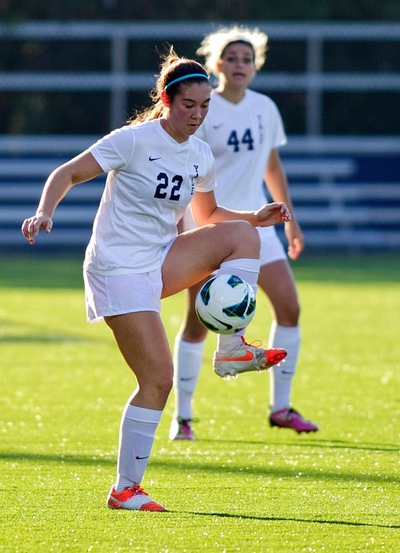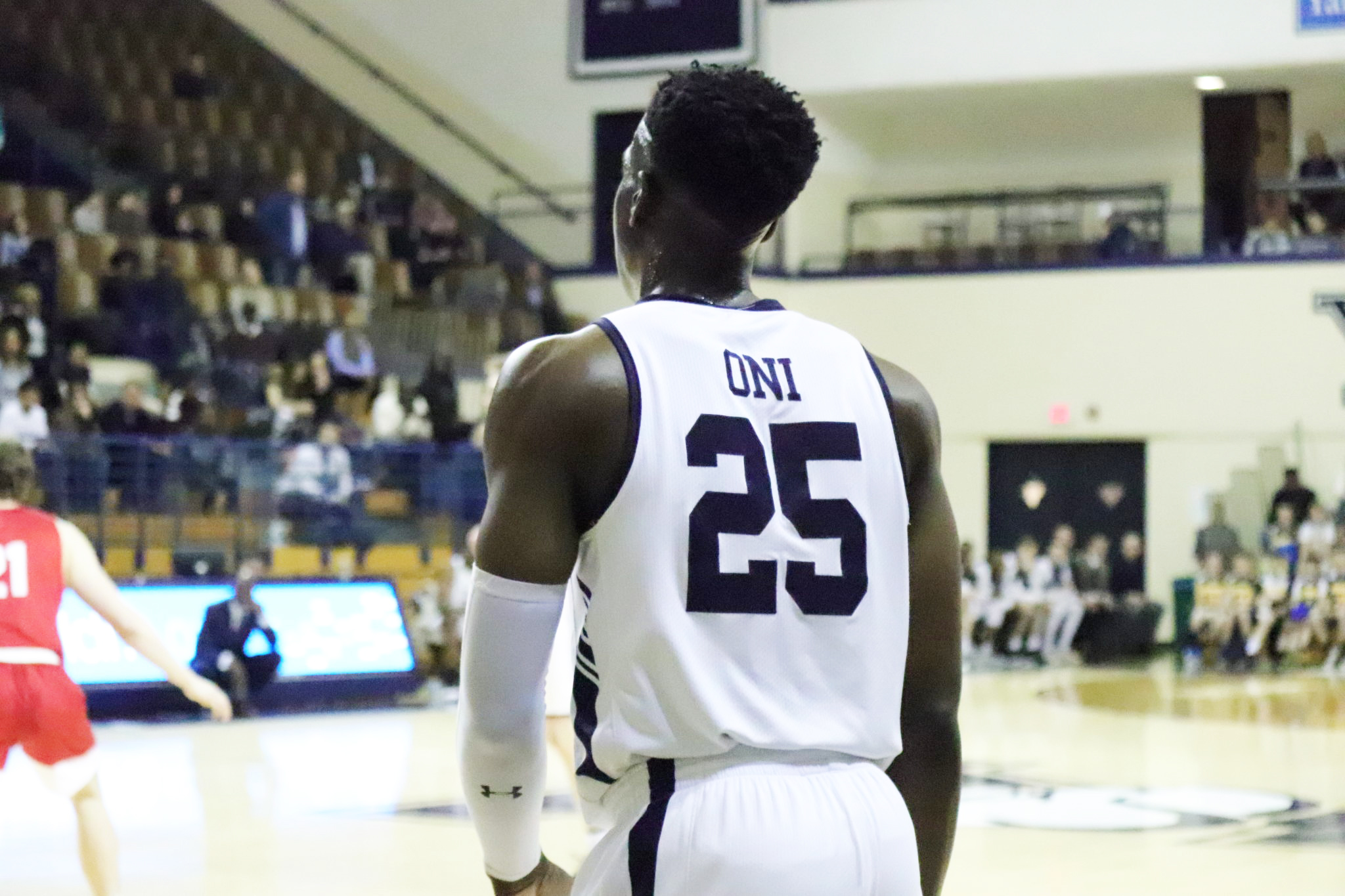UP CLOSE:
Defeating doubt — the path to the pros
At a height of 198 feet, Payne Whitney Gym towers over campus. But despite its prominent spot in Yale University’s skyline, the building — which bears more resemblance to a cathedral than an athletics complex — blends in with the rest of Yale’s academic buildings.
Payne Whitney is a symbol of Yale Athletic’s lack of visibility at large. Yale, of course, is known for its academic prowess, but many forget — even current students — that it boasts 35 varsity sports teams and competes in Division I with schools such as Ohio State, Duke, Florida and other universities that boast top-tier athletic programs.
Still, through sheer will and determination, each year, several current and former Yale student-athletes participate in professional sports as players, owners, or general managers, according to Director of Athletics Vicky Chun.
“At Yale it is all about excellence and leadership in all areas of life and athletics is no different … history has shown you can even be the President of the United States,” Chun said.
In interviews with the News, Yale athletes and coaches said that the sports world often underestimates the Ivy League. In response, the conference has worked in recent years to increase its exposure and elevate the talents of its players to a national platform. In 2018, the conference took a monumental step forward when it signed a long-term deal with ESPN that guaranteed 1,100 conference events would be available on its new subscription-based streaming service ESPN+. In addition, the deal assured that 24 regular-season and post-season events would air on ESPN’s television stations.
Though this deal may not convince students to flock to the Yale Bowl or John J. Lee Amphitheater, professional sports leagues across the country are starting to take notice of what the Ancient Eight has to offer.
“It’s just an opportunity, someone to believe in you to the point where you can be successful,” Yale men’s basketball head coach James Jones said. “There are a lot of kids that just don’t have that chance, but I believe the leagues’ eyes are starting to be opened up, and they’re seeing a bit more broader.”
But as TD Ierlan ’20, Carlin Hudson ’18, and Miye Oni ’20 show, the distance between the Ivy League and the world of professional sports may be narrowing.
THE TRANSFER
As confetti floated down from the upper part of Gillette Stadium in Foxborough, Mass., the men’s lacrosse team — accompanied by University President Peter Salovey and Yale College Dean Marvin Chun — basked in the glory of the 2018 national championship trophy — their first ever NCAA title.
With the class of 2018 asserting itself as the winningest class in school history — collecting an impressive 51 wins altogether — lacrosse fans wondered how the team would fair in 2019. Meanwhile, the team’s seniors were wondering what to do with their lives.
Before the conclusion of the 2018 regular season, six graduating seniors — attacker and 2018 Tewaaraton winner Ben Reeves, midfielders Jason Alessi, Tyler Warner, faceoff specialist Conor Mackie and defenders Christopher Keating and Jerry O’Connor — were drafted to the Major League Lacrosse, one of the two professional lacrosse leagues in the United States.
But despite the competitiveness of Yale’s men’s lacrosse team, many players who pass through Yale do not consider playing professionally as an option. With a base MLL salary ranging from $10,000 to $25,000 per year, MLL athletes often possess a second job while they pursue a professional lacrosse career.
“A lot of the guys don’t necessarily want to do that,” head coach Andy Shay said. “They want a good job or maybe grad school, so the Yale guys don’t exactly lineup for that league … Some of the best players in the pro league are former Ivy League players. Our guys don’t go to Yale to be a lacrosse player. Despite the fact that we’re a good college program, it’s not really what these guys want to do. They want to go to med school; they want to go to Wall Street or they want to go to law school.”
Still, Yale’s newest faceoff specialist, star transfer Ierlan, may be the one to break that mold.

A New York native, Ierlan played for his high school’s football, wrestling and lacrosse teams. His successes on the wrestling mat — he broke a Victor record after he totaled 161 wins throughout his career — gave him the skill set necessary to become one of the top faceoff recruits. Although Ivy League schools appeared on his recruiting radar, he initially did not give strong consideration to their programs. As a high school junior, he committed to play lacrosse for head coach Scott Marr at Albany.
In his rookie campaign with the Great Danes, he led the team to a quarterfinal appearance in the NCAA tournament and boasted the nation’s second-best faceoff percentage — just shy of Denver’s Trevor Baptiste, who had been widely considered the country’s most unstoppable force at the faceoff X.
In his second year of collegiate play, Ierlan etched his name into lacrosse history, setting Division I records in faceoff percentage, faceoff wins and ground balls — with 0.791, 359 and 254, respectively. His efforts carried the Great Danes to the semifinals of the 2018 national championship tournament. But Albany ultimately fell short 20–11 against Yale.
During his sophomore season Ierlan decided that he wanted to transfer to a school that would provide higher academic rigor. After Albany granted his release from the university on June 7, he was free to join any lacrosse program in the country. Though initially convinced he would join his brother Chayse at Cornell where he plays goalie, Ierlan ultimately decided to play for the Blue and White after much coaxing from Reeves, Shay and midfielder John Daniggelis ’19.
Now a political science major in Pierson College, the Victor, N.Y., native has his sights set on the finance world. But his career intentions directly after college have nothing to do with Wall Street.
“I want to play lacrosse as long as possible,” Ierlan said. “Professional lacrosse is definitely something I want to do. I didn’t exactly come to Yale just so I can play lacrosse after school, so I came here to set up myself for the next 40 years of my life instead of four years of lacrosse… If a job or my education or something comes first, then it comes first… It’s got to work with my work schedule after college, but I definitely look forward to playing professional lacrosse.”
THE WALK-ON
When she set foot on campus as a first year in 2014, Carlin Hudson ’18 was content with the fact that her soccer-playing career would be over upon graduation.
Four years after walking on to the women’s soccer team, Hudson heard her name called in the fourth round of the 2018 National Women’s Soccer League’s College Draft. She was selected by the North Carolina Courage — marking the first time a Yale women’s soccer player was ever drafted by a professional team.
As a walk-on, Hudson didn’t even consider playing professionally until her senior year. Even then, she thought that overseas leagues would suit her better, since she didn’t think she possessed the talent to play in the United States. Her first goal, she told the News, was to get playing time.

Heralded as a hard-nosed defender, Hudson asserted herself as the Bulldogs’ leader and one of the best defenders in the Ancient Eight. Her physical play allowed her to shut down Harvard’s Margaret “Midge” Purce — a two-time Ivy League Player of the Year winner — and force a shutout in one of her best performances at Yale. But the shift from the Ivy League to the pros was tougher than Hudson expected.
“The change between Yale and the level, when I went into preseason, was definitely a really big shock,” Hudson said. “While I feel, like I belong here, and anyone with the talent necessary will be able to raise their level to match whatever level they’re at, I think that I had a bigger jump than most coming from the Ivy League.”
Now, as a member of the Washington Spirit, Hudson plays against — and alongside — her long-time athletic heroes and members of the US national team. In addition to fighting for playing time, she said she continues to fight against the preconceived notions that hold Ivy League professional–hopefuls back.
The Ivy League is unique in the rules it enforces regarding when preseasons can begin and how many hours each team can practice during the week. The later start time for the Fall preseason is especially helpful for most athletes in the conference, as it allows them to have internships and working-opportunities in the summer to bolster their resumes in efforts to find ideal jobs after their time at Yale. But these rules can hinder athletes who want to play professionally.
“Because the Ivy League makes those rules to prioritize academics over athletics, I think that a lot of people believe that, right or wrong, athletes that play in the league prioritize academics over athletics,” Hudson said. “They might have a viewpoint that says that maybe they are not as serious as someone coming from a school that is a big athletic school.”
THE UNDERDOG
It is not clear when basketball fans around the country began to realize the talent and cohesiveness of the 2018–2019 Yale men’s basketball team.
Was it after the Bulldogs opened the season with an impressive win against Cal Berkeley roughly 8,000 miles from home at the Baoshan Sports Center in Shanghai? Could it be when they staged a come-from-behind upset of Miami at the American Airlines Arena during their grueling nonconference schedule? Maybe it was when they downed rival Harvard in the finals of the tournament to clinch an NCAA tournament berth or after their four-point loss to the SEC champion LSU Tigers in the first round of March Madness.
Or did they even realize how good the team was at all?
“Everyone thinks we’re going to be soft or not as talented or not as athletic,” star guard Miye Oni ’20 said. “It’s definitely a stigma, which is clearly not true, but it is what it is. You really have to break the stigma and fight it with just showing people that you’re better than what they think.”
And Oni did just that.

Coaches and fans alike have underestimated the 6-foot-6-inch, 210-pound guard ever since he set foot on a basketball court. Originally undersized, Oni longed to play professional basketball despite only receiving Division III offers at the conclusion of his high school career in California.
Then, Jones and Yale called, interested in bringing him in to play for the Elis. But it was past the admissions deadline for that cycle, so Oni was forced to play an extra year of high school ball at Suffield Academy in Connecticut where he was named the NEPSAC Class A Player of the Year.
Steadily improving each year at Yale, Oni raised his initial points-per-game average from 12.9 to 17.1 and evolved from a reliable starter to the 2018–2019 Ivy League Player of the Year. Even before earning the title of the Ancient Eight’s top player, he consistently drew the attention of numerous NBA scouts including individuals affiliated with the Golden State Warriors and the Dallas Mavericks.
“Sometimes I’m practicing and I’m like ‘oh wow,’” Oni said after defeating Harvard in the Ivy League tournament final. “You’re going through a scout and I’m the top of the other team’s scout and I’m like ‘how did I even get here?’ Literally four years ago I was going to play Division III. Sometimes I reflect, but it’s just a testament to the coaches here believing in me.”
The attention was justified — the California native possesses everything a scout would look for: length, athleticism, leadership, playmaking ability, shot-creating ability, competitiveness and a drive to play defense. Oni tore up the league with ferocious one-handed slams, impressive dimes and tremendous step-back threes.
But when he — like many other basketball players — fell victim to a cold-shooting performance against the Bayou Bengals in the first round of the NCAA tournament, many wondered if he would in fact declare for the NBA draft or return to Yale for his senior year.
On March 29, Oni told ESPN that he had signed with Harrison Gaines of SLASH Sports — the same agent who represents NBA player Lonzo Ball — and that he would be throwing his name into the mix. If selected, he would become the first Ancient Eight player drafted by an NBA team since the Minnesota Timberwolves selected Penn’s Jerome Allen as the 49th pick in 1995.
In preparation for the draft, Oni requested an evaluation from the NBA Undergraduate Advisory Committee.
Since 2016, college basketball players who declare have been able to remove themselves from the draft and maintain eligibility if they withdraw within 10 days after the invite-only NBA combine in May. Oni has taken measures not only to preserve his eligibility to return to school but also to ensure the completion of his degree regardless of whether he is drafted. Additionally, new NCAA policies allow basketball players who request an evaluation from the NBA Undergraduate Advisory Committee and attend the combine to return to school if they are not selected. They must notify their institution’s athletics director by 5 p.m. the Monday following the draft — which will take place on June 20 at the Barclays Center in Brooklyn.
Former Yale player Makai Mason ’18 also appears on a few mock draft boards this year. The guard transferred to Baylor at the end of his senior season to utilize his remaining year of eligibility due to a season-ending injury he suffered during his time in New Haven. As a Bear, Mason averaged 14.9 points, 2.5 rebounds and 3.4 assists per contest. He even recorded a 40-point explosion against Texas Christian University on Feb. 2.
Both Mason and Oni’s triumphs on the court are testaments to the prowess of Jones and other Ivy League coaches, and represent a shift in talent distribution across all of the Division I conferences. In particular, the story of former Harvard guard Jeremy Lin cannot be ignored. Not only did he impressively break out as a member of the New York Knicks in 2012, but also as the only active Ivy League player in the NBA. After almost a decade the league, Lin has paved the way for more Ancient Eight talent to break through into the professional spotlight.
“Our league has gained a lot of attention over the last 10 to 12 years,” Harvard head coach Tommy Amaker said after winning at Yale this season. “The kinds of players that have been coming into our conference, I think the Jeremy Lin factor is real. It is a piece to the puzzle of our conference as a whole, and certainly we anticipate for people to take notice of our league around the country in different ways, but certainly for scouting for the NBA … you see some of the talented players coming into our league and performing in our league at a high level.”
THE MESSAGE
The stories of Ierlan, Hudson and Oni are merely three of the many epics to emerge from Yale athletics and the Ivy League as a whole.
Although it is impossible to predict whether or not these efforts will stop the sports world from underestimating the Ivy League, the conference’s increased visibility and the impressive play of its athletes could positively affect its perception in the future.
“[Professional sports leagues] have more of a vision on [the Ivy League], and I think that down the road here many more kids are going to get opportunities,” Jones said. “People are starting to understand that this league is really good.”

